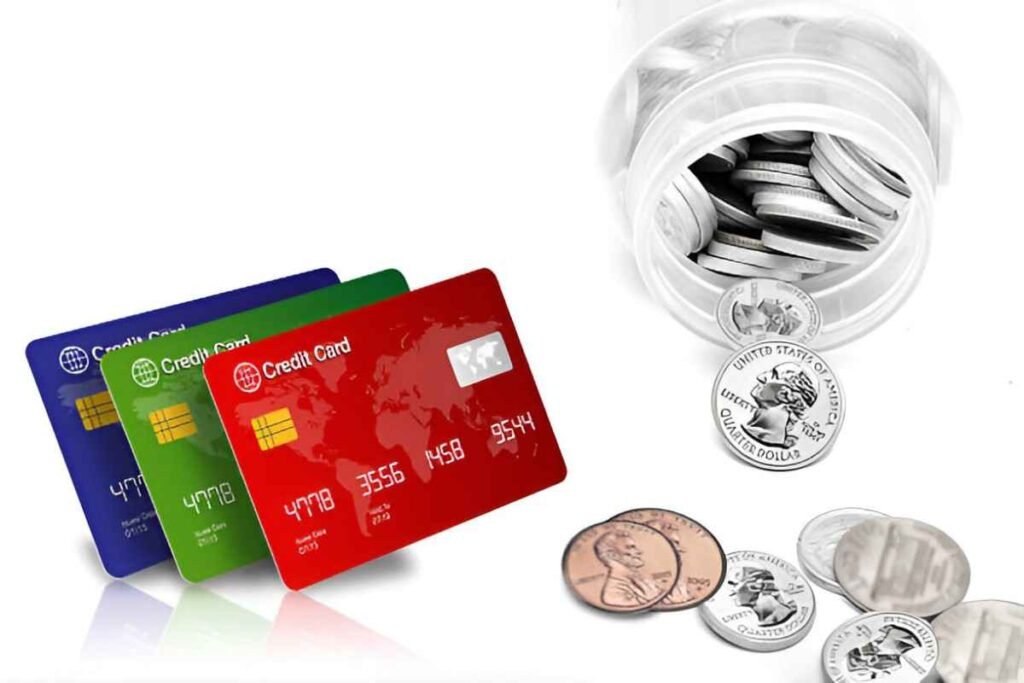Accepting credit card payments is a crucial aspect of modern business. Whether you are running a brick-and-mortar store, offering services, or operating an online business, providing customers with the convenience of paying by credit card can increase your sales and streamline transactions. As a business owner, finding the right app to accept credit card payments can save you time, effort, and money. Over the years, the options have expanded, and today, there are numerous apps available to handle credit card transactions in a simple and efficient manner.
I’ve spent considerable time researching, testing, and analyzing several apps that promise to handle credit card payments. In this article, I’ll walk you through my experience, offer comparisons between the best options, and guide you toward the app that will suit your business needs.
Table of Contents
What to Look for in an App to Accept Credit Card Payments
Before diving into the specifics of each app, it’s important to know what to look for in an ideal payment processor app. The key features I considered while evaluating different apps include:
- Transaction Fees: Understanding the fee structure is crucial. Apps typically charge a percentage of each transaction, and some may have additional fixed fees.
- Ease of Use: An app should be simple to set up and intuitive to use for both you and your customers.
- Security: A secure payment process ensures that customer data is protected. Look for apps that comply with Payment Card Industry Data Security Standards (PCI DSS).
- Customer Support: Good customer support can save you from unnecessary headaches in case something goes wrong.
- Compatibility: Depending on your business, you might need an app that integrates well with other tools, such as accounting software or your website.
- Payment Methods Accepted: Many apps support not only credit cards but also other payment methods, such as debit cards, bank transfers, and even digital wallets like Apple Pay or Google Pay.
With that in mind, let’s take a look at some of the most popular apps that allow you to accept credit card payments.
1. Square
Square is one of the most well-known payment apps in the market, and for a good reason. I find Square to be incredibly easy to set up, and it offers a full range of features that cater to both physical and online businesses.
Key Features:
- Transaction Fees: Square charges 2.6% + 10¢ per swipe for in-person payments. For online transactions, the fee is 2.9% + 30¢.
- Payment Methods Accepted: Credit cards, debit cards, Apple Pay, Google Pay, and even gift cards.
- Security: Square is PCI-compliant and uses encryption to ensure that payments are secure.
- Ease of Use: I’ve used Square for both in-store and online transactions, and I can say that the user interface is intuitive. The app works seamlessly with Square’s point-of-sale hardware, including card readers and registers.
Square’s mobile app can be used on smartphones or tablets, and the setup process is straightforward. Simply sign up, download the app, and link your bank account to start accepting payments.
Pros:
- Free app and card reader
- No monthly fees or hidden charges
- Real-time reporting and analytics
- Easy-to-understand pricing
Cons:
- Higher transaction fees for smaller businesses
- Limited international availability
2. PayPal Here
PayPal is a trusted name in online payments, and its mobile app, PayPal Here, offers the same reliability for credit card transactions. PayPal Here is perfect if you want an easy way to accept payments from a wide range of customers.
Key Features:
- Transaction Fees: PayPal Here charges 2.7% per transaction for swiped, tapped, or inserted card payments. If you are manually entering card information, the fee is 3.5% + 15¢.
- Payment Methods Accepted: Credit cards, debit cards, PayPal, and even checks.
- Security: PayPal offers end-to-end encryption and is PCI-compliant.
- Ease of Use: PayPal Here is easy to use, and the app’s interface is user-friendly. It also integrates well with PayPal’s online platform if you’re already using it for e-commerce.
The setup is as simple as Square’s. After signing up, you can link your account and start accepting payments right away. The app is available for both iOS and Android devices.
Pros:
- No monthly fee
- Low transaction fees for in-person transactions
- Well-known, trusted brand
- Integration with PayPal accounts
Cons:
- Higher fees for manual entry
- Limited features compared to other apps
3. Shopify Payments
If you already use Shopify to run your online store, you may want to use Shopify Payments to handle your credit card transactions. Shopify Payments is a built-in payment processor designed to work seamlessly with the Shopify platform.
Key Features:
- Transaction Fees: Shopify Payments charges a 2.9% + 30¢ fee for online transactions. In-person transactions via Shopify POS are charged 2.7% per transaction.
- Payment Methods Accepted: Credit cards, debit cards, Apple Pay, Google Pay, and gift cards.
- Security: Shopify Payments complies with PCI DSS standards and offers secure payment processing.
- Ease of Use: Since Shopify Payments is integrated directly into the Shopify platform, it’s easy to manage payments, inventory, and customer data from a single dashboard.
While this app works best for Shopify users, I’ve found it to be a seamless solution for handling online transactions, especially for those already using Shopify for e-commerce.
Pros:
- Simple integration with Shopify stores
- No third-party payment gateway fees
- Lower transaction fees for Shopify users
Cons:
- Only available to Shopify users
- Higher fees for international transactions
4. Venmo for Business
Venmo, owned by PayPal, is widely known for its personal peer-to-peer payment features. However, Venmo also offers a business account, allowing you to accept credit card payments through the app. If your business is small or you’re just starting out, Venmo could be a good option for you.
Key Features:
- Transaction Fees: Venmo charges a 1.9% + 10¢ fee for credit card transactions.
- Payment Methods Accepted: Credit cards, debit cards, and Venmo balance.
- Security: Venmo uses encryption to protect user information, and it is PCI-compliant.
- Ease of Use: I’ve found Venmo to be quick and convenient. The app has a straightforward setup process, and payments can be accepted in a few clicks.
Venmo for Business also allows customers to pay via their Venmo balance, making it a great option if you’re serving a younger, tech-savvy customer base.
Pros:
- Low fees for small transactions
- Familiar platform for many consumers
- Fast setup
Cons:
- Only available in the U.S.
- Not ideal for larger businesses
5. Stripe
Stripe is widely used by online businesses, particularly for e-commerce. The platform is known for its developer-friendly features, but it also offers a user-friendly mobile app for accepting credit card payments.
Key Features:
- Transaction Fees: Stripe charges 2.9% + 30¢ for online payments. In-person payments using Stripe Terminal cost 2.7% + 5¢.
- Payment Methods Accepted: Credit cards, debit cards, Apple Pay, Google Pay, and more.
- Security: Stripe is PCI-compliant and offers robust fraud detection tools.
- Ease of Use: Stripe’s app is clean and simple to use, making it a solid choice for business owners who prefer a more customizable solution.
If you need an app that integrates well with online stores or custom-built websites, Stripe is a strong option.
Pros:
- Flexible integration with various platforms
- Strong fraud protection tools
- Transparent pricing
Cons:
- More complex than other apps
- Higher fees for international payments
Comparison Table of Payment Apps
| Feature | Square | PayPal Here | Shopify Payments | Venmo for Business | Stripe |
|---|---|---|---|---|---|
| Transaction Fee (Online) | 2.9% + 30¢ | 2.7% | 2.9% + 30¢ | 1.9% + 10¢ | 2.9% + 30¢ |
| Transaction Fee (In-Person) | 2.6% + 10¢ | 2.7% | 2.7% | 1.9% + 10¢ | 2.7% + 5¢ |
| Payment Methods Accepted | Credit Cards, Debit, Apple Pay, Google Pay | Credit Cards, Debit, PayPal | Credit Cards, Debit, Apple Pay, Google Pay | Credit Cards, Debit, Venmo | Credit Cards, Debit, Apple Pay, Google Pay |
| Security | PCI-compliant | PCI-compliant | PCI-compliant | PCI-compliant | PCI-compliant |
| Ease of Use | Easy | Easy | Easy | Very Easy | Moderate |
| Best For | All types of businesses | Small businesses, Personal use | Shopify users | Small, casual businesses | Developers, E-commerce |
Conclusion
Choosing the right app to accept credit card payments depends on several factors, such as your business type, transaction volume, and customer preferences. After testing these options, I’ve concluded that there isn’t one-size-fits-all; each app has its strengths and weaknesses.
For small businesses and startups, Square or PayPal Here are great choices due to their simplicity and low-cost setup. If you run an online store, Shopify Payments or Stripe are better suited to handle e-commerce transactions. Venmo for Business is a good option for businesses targeting a younger customer base.
Ultimately, it’s about finding the solution that best aligns with your business goals. Consider transaction fees, ease of use, and security when making your choice, and don’t be afraid to try out a couple of apps before deciding.





